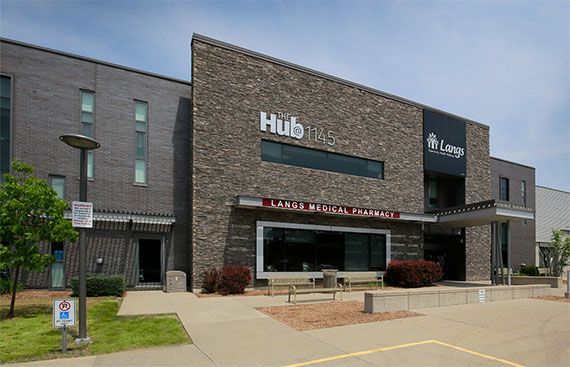Langs Farm Village Association (“Langs”) is a charitable corporation that operates a community hub in Cambridge, Ontario. The community hub contains a Community Health Centre, a pharmacy, a chiropractor’s office and offices for a number of non-profit community partners.
Langs incorporated a separate charitable legal entity, Langs Community Development Corporation (“LCDC”), to purchase the property on which the community hub is located. LCDC leases the entire building on the property to Langs at below market rents so that Langs could operate its programs. Langs operates its Community Health Centre and subleases portions of the building to community partners.
NextGenLaw LLP brought an application to Superior Court on LCDC’s behalf arguing that the property should be exempt from municipal taxation pursuant to subparagraph 3(1)12(iii) of the Assessment Act, which exempts “Land owned, used and occupied by…any charitable, non-profit philanthropic corporation organized for the relief of the poor if the corporation is supported in part by public funds.”
MPAC opposed the application on two grounds:
- That neither LCDC nor Langs was organized for the relief of the poor; and
- That LCDC was not supported in part by public funds.
On March 28, 2024, the Court granted the application for exemption in Langs Community v. Municipal Property Assessment Corp. & City of Cambridge, finding that LCDC and Langs were organized for the relief of the poor and LCDC was supported in part by public funds.
The Court also accepted NextGenLaw LLP’s argument that LCDC and Langs shared an “identity of patrimony.” This is a common law principle that permits certain closely related corporations to be treated the same for tax purposes.
The Court reviewed the financial relationship between Langs and LCDC, how the two corporations are treated by third parties, and the Directors of the corporations, and concluded, at paragraph 42 of Langs:
The only reason LCDC exists is that Langs made the decision to shield itself from risk. LCDC’s only purpose is to own the property and to support Langs. I find that LCDC is, in fact, as the financial statements of each corporation state, “controlled by Langs”, and that there is a shared identity in patrimony.
That finding resolved the public funds issue because Langs is largely funded by government grants. But the Court also considered NextGenLaw LLP’s argument that LCDC was also supported in part by public funds because it was a party to a funding contract with the City of Cambridge.
At paragraph 47 of Langs, the Court accepted that a “single act of funding was held to meet the requirement under the Assessment Act, that in order to be exempt, the organization must be supported in part by public funds.” The Court then went on to consider if LCDC received funds under the contracts at issue.
One of the contracts between the City, Langs, and LCDC was a $3,000,000 grant to construct the building. The Court found that the City paid the funds to Langs and LCDC, specifically noting, at paragraph 51 of Langs, that the agreement lists three parties but only has two signatures. The Court also noted that many of the obligations agreed to could only be performed by LCDC. The Court concluded, at paragraph 56 of Langs, that “LCDC, together with Langs, received $3,000,000 from the City of Cambridge in support of the construction of the community hub/community centre, and LCDC is the current owner of the building, which was constructed in part with those funds. LCDC has met its onus to show that it was supported in part by public funds.” Significantly, the Court was not convinced by MPAC’s argument that Langs was the one that actually received the payment from the City.
The final issue was if Langs and LCDC were “organized for the relief of the poor.” The Court found that many of the programs offered by Langs appeared to be aimed at those in economic need.
At paragraph 89 of Langs, the Court finds that the evidence showed that “a substantial percentage of the clients of Langs are people who are fairly described as poor. I accept that the majority of the programming provided by Langs are either directly aimed at assisting the poor or are utilized by lower income clients who attend the hub for other services.” LCDC’s only purpose is to promote the effectiveness of Langs and so it too was organized for the relief of poverty.
Those findings were sufficient to exempt the property from municipal taxation. This will allow Langs and LCDC to use more of their funding to relieve poverty.
If you have a charity that owns land and would benefit from a property tax exemption, contact NextGenLaw LLP and see how we can help.
.png)
